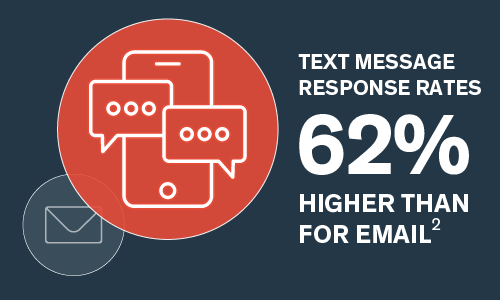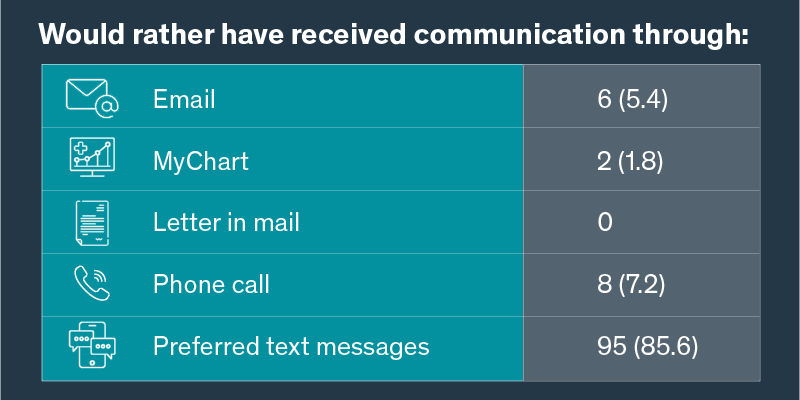Personalization in healthcare is garnering attention as a potential game changer for consumers. It’s hailed as a way to make healthcare more efficient and accessible, as well as being able to customize outreach to individual patients. It promises a healthcare experience tailored to the individual needs of each patient. This could mean better diagnosis and treatments for their specific medical history and lifestyle. It could also mean more efficient use of resources and greater access to quality care.
If that’s true, how does personalization apply to hospitals and healthcare? This “quest” was a topic discussed at the Healthcare Internet Conference by Craig Kartchner, AVP Marketing & Customer Experience for HonorHealth, a healthcare system in Phoenix, AZ, and Jenn Misora, VP Client Success for Actium Health.
What is Personalization in Healthcare?
Part of personalization is the combination of making sure the right care is being provided to the right patient at the right time, driven by the right communications. In order to do that right, an organization truly has to understand its customer.
Another part of personalization is how the entire customer experience adds up to deliver on the promise of “You’re not just a number” or “We care for the whole you” language that almost every healthcare entity uses. If that’s the definition, how is healthcare doing? Are messages tailored to me, in my channel of preference? Can healthcare customize my experience the way I want it? Can I choose my provider, my clinic location, how I get my test results delivered? Can I follow the progress of my lab results, the way I can follow the progress of my pizza?

Is Healthcare Winning at Personalization?
Short answer: No. “If healthcare personalization is the Holy Grail, we're not even close to finding it. We're not even on the trail of it. We're not even on the scent of it. We have so much more to do,” said Kartchner.
So the messaging part isn’t working. How about the experiential part? Do patients feel like they’re more than a number?
Doctors may say so, and patients may say their time spent with the doctor is wonderful. The experience within those four walls of the clinical setting may be 100% tailored to that individual, as it should be.
But what about outside that setting? What about the rest of the customer journey?
If you ask your customer, or ask yourself as a healthcare customer, you probably don’t feel like the system is focused on you. How long does it take you to get an appointment? Can you schedule one on your own? Did they text you a reminder? Could you do it via an app? Can you call your doctor, like all the ads tell you to?
I think we all know that feeling. Barriers, delays, and basic blocks frustrate us and leave us not knowing where to turn. As Kartchner put it, “I keep filling in the same info, you don’t know who I am, you make it hard to work with you.” That sums up the customer journey, at least outside the doctor’s office.
Barriers to Personalization: Risk-Aversion or Patient Protection?
Healthcare seems full of barriers to personalization. The main reason: silos. Information is kept in individual pockets, so a system-wide view is nearly impossible.
As a patient, why can’t you get a text to remind you to schedule your annual exam, just like you get text updates that your food delivery is on its way? It could be because your cell phone number is housed in one EMR (electronic medical records) database, but that database can’t be accessed by any other database. How many does your system have? Kartchner gave an example of an ACO (Accountable Care Organization) with more than 60 EMRs. Patients want texts from their healthcare providers, just as they do from other providers in their lives.


And it’s not companies like Actium Health, which offers clients SMS messaging capabilities, that say people prefer texting. Medical publications also have data showing how people want to be communicated with, and text messages are by far the preferred.

That’s where the unique nature of healthcare comes in. Yes, texting is available, but the compliance requirements in healthcare are so “draconian that you can’t ignore it,” according to Kartchner. Violating HIPAA can lead to fines of tens of thousands of dollars. Even when patients say they want to receive text messages and sign forms to show they absolve the healthcare system of any liability, your Compliance team is still likely to want to stick with current methods.
Moving beyond notifications, what about the experience itself? In some instances, it’s not legal risk but rather patient safety that’s at stake. Hospitals need to ask certain questions multiple times as a patient moves through the system. And yes, there are technology solutions for that, too (like palm scans). Whether you’re a financial, marketing, or service line leader, you need to keep looking for those. Patient experience and patient safety don’t have to be mutually exclusive.
In yet a third category, it’s not risk or safety that’s putting up a block, it’s capacity. Most healthcare providers can’t give you the exact type of appointment you want where and when you want it, as with Amazon deliveries.
With all of those barriers, where does that leave healthcare with the “holy grail” of personalization?
What Personalization in Healthcare Can Make Possible
Before giving up on personalization in healthcare, is that the right goal? What if leaders in your organization are saying “we don’t need personalization to drive growth – we can’t even handle the patient demand we have!” Can you heave a sigh of relief and say, “it doesn’t matter that we’re so far behind other consumer-facing companies – we’ll always have customers”?
Instead of “purchase” or the equivalent, think about other business needs, like capacity. What if your system doesn’t have enough? (Think of your average wait times and your staff overtime.) How do you know if you have unfilled appointments that could be used to reduce wait times? If your leadership is saying capacity is the issue, then more demand isn’t the goal. But it turns out the same artificial intelligence and machine-learning that’s key to personalization can also be key to other business goals, like mapping your highest-need patients to available capacity and adjusting supply to demand. Let's look at best practices for getting start and how personalization can deliver on other goals for your organization.
- Build relationships. Just like your data shouldn’t be siloed, your relationships shouldn’t be either. Whether you’re a service line leader or in marketing, build relationships with your data team, your clinicians, legal, compliance. Every part of your business that touches the customer should be on your list. Craig suggested a “power map.” Find out who you need to know and get to know them. And be the relationship connector. If you’re trying to convince your organization to move to text, but legal is hesitant, connect your head of legal to the head of legal at another hospital that’s made the shift. Personalization means so much more. You have to think beyond the marketing journey to every step and every interaction.
- Think always on. Especially in marketing you might think in terms of campaigns. And yes, if the media is full of heart health information, your customers might be more receptive to that messaging. But don’t turn on the “hose” of outreach and then turn it off. Health is a daily thing. So are relationships — don’t treat them like a light switch.
- Start small. Start small with what you have. Maybe you have one use case, one appointment type. Maybe you start with one pain point, like the waitlist. Look at what you can do to make that better. Do you have what you need, or do you need some better tools, like better propensity models. Don’t try to solve everything at once. Think small steps for big, lasting change.
- Invest where you human effort can’t: AI and Machine Learning. Take a million bites, yes. Start small, absolutely. But when it comes to data, humans can’t digest all of it, let alone make sense of it. Deploy AI and machine learning to absorb, analyze, and predict patient behavior. For example, who’s at risk for a cardiac event? Are they scheduled to come in for a primary care visit? If not, prompt them. Given how many people don’t have a primary care physician, why try to persuade them all to come in, instead of focusing on those who truly need it? That’s the kind of data the AI can give you.
- Use the right channel. This can be a tough sell, internally, but be the customer champion. If all the data says patients prefer text, quit sending them a letter to tell them to check their online patient portal. Other health care systems are using SMS. Your system can, too. Solutions like Actium are already familiar with HIPAA and what can and can’t be shared in a text. And back to the relationships, connect them to other organizations who use text with measurable results.
- Remove friction. Always ask: is this easy, is it actionable right now? Instead of filling out a form, can the patient call the call center? Instead of calling to schedule an appointment, if you have online scheduling, direct the patient there. Always try to see the experience from the patient’s perspective. That’s hard to do when you know all the complexities, but humans are wired to avoid friction — do what you can to remove it so they can get the care they need.
Give Up or Go Forward: The Healing Power of Personalization
Healthcare is going through major change. As leaders, it’s important to invest in the right tools for the right people. Make sure that those tools are being used to help close the gaps in patient engagement, prevention, affordability, and access. Personalization is key to helping patients navigate this ever-changing healthcare landscape and make the best decision for themselves and their families. Knowing your patients and being able to prompt their behavior literally saves lives. And remember, no one is a number.

Sources:
1 National Library of Medicine
2 What Data Tells Us About The State Of Patient Engagement
3 FICO Global Survey: 80% of Smartphone Users Interested in Health Care Alert

